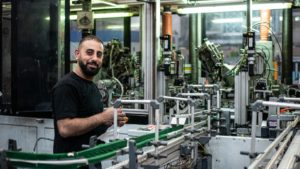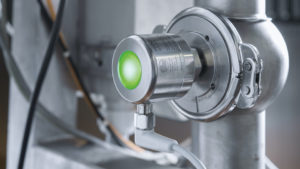In the food and beverage industry, the abbreviation CCP (Critical Control Point) is not uncommon today. This abbreviation describes critical control points in the plants that are relevant to the quality and safety of the end product. For this reason, food and beverage manufacturers do not take any safety risks and set high test requirements for these measuring points. In general, critical control points are redundant. In this way the plant operator wants to ensure that, for example, the temperature sensors monitor each other between two calibration intervals. It is obvious that as a consequence the costs for integration into the control system as well as the costs of calibration are doubled. But is this approach really a safeguard?
 Often temperature sensors are exposed to strong influences by the process or by the environment. These include shock and vibration caused by pumps or rapidly opening and closing valves. Rapid temperature changes or temperature shocks, for example during cleaning cycles, should not be disregarded either. These influencing factors can cause temperature sensors to drift and transmit an incorrect value. When this redundancy is used, both sensors can drift in the same direction and no difference is detected by the controller, although a possible deviation may exist.
Often temperature sensors are exposed to strong influences by the process or by the environment. These include shock and vibration caused by pumps or rapidly opening and closing valves. Rapid temperature changes or temperature shocks, for example during cleaning cycles, should not be disregarded either. These influencing factors can cause temperature sensors to drift and transmit an incorrect value. When this redundancy is used, both sensors can drift in the same direction and no difference is detected by the controller, although a possible deviation may exist.
IO-Link to Generate Sensor Meta Data and Status Conditions
Today’s “smart” sensors help the user to better analyze plant conditions and to react to events preferably before they occur. Meta data such as drift detection in the TCC temperature sensor from ifm helps to increase food safety, ensure product quality and keep plant availability high.
The TCC has integrated and continuous drift monitoring over the entire measuring range. In case of a possible temperature drift of one of the two elements, the sensor detects this automatically and reports it directly to the control system in case of a specified deviation (can be set by the customer). In this way, the previously mentioned CCPs are additionally secured and thus enable a changeover from reactive to proactive hazard detection. Furthermore, sensor data such as: a unique serial number or even event logs for tracking an error can be read out via IO-Link and stored for documentation purposes.
Digital Retrofit of Existing Installations
 IO-Link makes it easy for the user to provide measurement data digitally, e.g. in existing plants based on contactor technology or in plant sections without a control system. Often IO-Link-capable sensors are already installed there without the available data being used for digital processing. Such additional data can provide safety- and quality-relevant process information and can be evaluated automatically.
IO-Link makes it easy for the user to provide measurement data digitally, e.g. in existing plants based on contactor technology or in plant sections without a control system. Often IO-Link-capable sensors are already installed there without the available data being used for digital processing. Such additional data can provide safety- and quality-relevant process information and can be evaluated automatically.
An interconnected IO-Link data splitter enables the sensor information to be decoupled via an IO-Link master without the existing system configuration or controller having to be changed: SIO (Standard Input-Output) signals are passed on to the controller without time delay, so that the actual control task remains unchanged.
IO-Link – Flexible for Every Application
Even remote or difficult-to-access sensors can be integrated via IO-Link. Long distances from sensor to master are bridged using an IO-Link repeater. On-site visualization of the sensor data is achieved by an IO-Link inline display. The process values are output at a sensible position on the freely configurable display. In addition, critical process value deviations, for example, can be displayed via an IO-Link signal light, thus enabling immediate intervention and safeguarding production.
